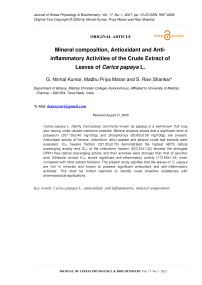Mineral composition, Antioxidant and Anti-inflammatory Activities of the Crude Extract of Leaves of Carica papaya L.
Автор: G. Nirmal Kumar, Madhu Priya Maran, S. Ravi Shankar
Журнал: Журнал стресс-физиологии и биохимии @jspb
Статья в выпуске: 1 т.17, 2021 года.
Бесплатный доступ
Carica papaya L. (family Caricaceae) commonly known as papaya is a well-known fruit crop also having under-utilized medicinal potential. Mineral analysis shows that a significant level of potassium (207.10±0.40 mg/100g) and phosphorous (65.60±0.59 mg/100g) are present. Antioxidant activity of hexane, chloroform, ethyl acetate and ethanol crude leaf extracts were evaluated. IC50 hexane fraction (321.82±0.78) demonstrated the highest ABTS radical scavenging activity and IC50 of the chloroform fraction (623.23±1.32) showed the strongest DPPH free radical scavenging activity and their activities were stronger than that of ascorbic acid. Ethanolic extract IC50 shows significant anti-inflammatory activity (173.66±1.24) when compared with other extract fractions. The present study signifies that the leaves of C. papaya are rich in minerals and known to possess significant antioxidant and anti-inflammatory activities. This shall be further explored to identify novel bioactive substances with pharmaceutical applications.
Carica papaya L., antioxidant, anti inflammatory, mineral composition
Короткий адрес: https://sciup.org/143173872
IDR: 143173872
Текст научной статьи Mineral composition, Antioxidant and Anti-inflammatory Activities of the Crude Extract of Leaves of Carica papaya L.
Medicinal plants, both wild and cultivated, have been used since the beginning of civilization as food and medicine. These plants produce a wide range of secondary metabolites as defence chemicals and they have found various therapeutic uses in medicine from time immemorial (Dilipkumar Pal et al., 2011). Papaya is a well-known plant for its edible fruit and it belongs to the family Caricaceae . They are tree-like large plant with 5-10 m tall stem and the leaves (50-70 cm diameter) are confined strictly to the top. The flowers emerge on the axils of the leaves and develop into large fruit. Fruits are large and big in size, fleshy orange in colour and seeds are numerous, black in colour, round in shape and they are covered with the gelatinous aril (Mahendra and Nikhil, 2016).
Carica papaya is commonly known as paw paw which is a rich source of carotenoids, ascorbic acid, thiamin, riboflavin, niacin, pyridoxine and vitamin K (Adetuyi et al., 2008 and Bari et al., 2006). The well riped fruits are popularly used as dessert or it can be made into a puree, wine and jam, while the unripe ones are used for cooking as raw vegetable (Matsuura et al., 2004 and Ahmed et al., 2002). Papaya is a good source of vitamin as mentioned and the amount varies between the maturation stages and varieties (Hernandez et al., 2006 and Wall 2006).
The entire plant of Carica papaya is economically valued in the various field, especially, has excellent medicinal properties. Investigation reports show that it helps to overcome heart-disease and also reduce high cholesterol levels. Papaya efficiently treats all types of abdominal, digestive problems such as dyspepsia, hyperacidity, dysentery and constipation. It is a potential source of beta-carotene that prevents the cause of some forms of cancer due to the activity of free radicals. Flowers are consumed orally to treat cough, bronchitis, asthma and chest cold. Leaves and fruits of papaya contain several proteins and alkaloids with the importance of industrial and pharmaceutical applications. Carapine, an alkaloid present in papaya is used as a heart depressant and for gastrointestinal ailment (Aravind et al ., 2013).
Some of the significant medicinal properties which include inhibition of cancer cell growth, helping to cure dengue fever, facilitate digestion, acne medicine, increase appetite, ease menstrual pain, meat tenderizer and relieve nausea. (Aravind et al., 2013). Regular consumption of ripen papayas overcomes habitual constipation and prevents premature ageing (Orwa et al., 2009). The unripe papaya fruits produce a kind of proteolytic enzyme called papain that helps in the digestion of proteins so it is used as an aid for indigestion (Ezekiel and Florence, 2012).
Biomolecules that inhibit the activity of free radicals and delay the oxidative damage of protein, lipids etc., are known as antioxidants. (Lim et al. , 2006). Some secondary metabolites in the papaya were related to the antioxidant activity. Previous studies on the DPPH free-radical scavenging activity using water extract of flesh seeds of papaya indicated the most potent antioxidant activity (Kothari and Seshadri, 2010). Inflammation is a problematic biological comeback of vascular tissue to harmful stimuli, pathogens, irritants characterized by redness, warmth, swelling and pain. Many medicinal plants have shown to exhibit potent anti-inflammatory effects in the treatment of inflammation (Deepa and Renuka, 2014). Bamidele et al . (2008) reported the antiinflammatory activities of ethanolic extract of leaves of papaya in rats using carrageenan-induced paw edema and formaldehyde induced arthritis models. The present study is envisaged to estimate the mineral content, antioxidant and anti-inflammatory activities of the crude extract of papaya leaf powder.
MATERIALS AND METHODS
Source of the Material
Leaves of Carica papaya L. were collected from in and around Tambaram, Tamil Nadu. The species was authenticated in the Centre for Floristic Research and Herbarium, Department of Botany, Madras Christian College, Tambaram, Tamil Nadu (Livingstone and Henry, 1994).
Mineral Analysis
One hundred gms of fresh leaves were taken and shade-dried for seven days. After that, it was grinded, sieved and the finely powdered leaf sample was kept in an air-tight container and used for further investigation. Minerals were determined by digesting the leaf powder in 3M Hydrochloric acid. The five inorganic elements calcium, iron, magnesium, phosphorus and potassium were determined according to the methods of AOAC (2003).
Preparation of the Leaf extract by Soxhlet extraction procedure
3gms of leaf samples were placed in the filter paper cartridge (No 89) in a standard Soxhlet apparatus and extracted with 170 ml of different solvents such as hexane, chloroform, ethyl acetate and ethanol for 2 hours. Extracts were cooled to room temperature and used at different dilutions for antioxidant and antiinflammatory activity determination.
Antioxidant Activity
ABTS Radical Scavenging Assay
Radical scavenging activity using ABTS was carried out according to the procedure followed by Delgado-Andrade et al . (2005). ABTS was obtained by mixing 7mM ABTS solution and 2.45 mM K 2 S 2 O 8 (Potassium perfulate). Then the mixture was left undisturbed in the dark for 12 - 16 h before use. The ABTS solution further diluted with 5 mM phosphate-buffered saline (pH 7.4) to an absorbance of 0.70±0.02 at 730 nm. After the addition of 1 mL of plant extract solution of varying concentrations (10-60 μg/mL) to 1 mL of diluted ABTS+ solution, the absorbance was measured after 30 min. The free-radical scavenging activity of the samples by ABTS was calculated by,
% = [(АО — А1)/А0]Х100
DPPH Free-Radical Scavenging Assay
-
1, 1- Diphenyl-2-picryl hydrazyl (DPPH) assay by Raaman (2015) with slight modification was used to determine free radical scavenging activity of the plant extract. Using methanol the solution of 1 mL of 0.1mM DPPH was prepared. Various concentration of 0.1 ml of the extract was reacted with 1.9 ml of DPPH solution. The reaction content was mixed carefully and left in the dark (room temperature) for 30 mins. The absorbance reading of the extract was recorded at 517 nm wavelength. Ascorbic acid (vitamin C) is a great antioxidizing agent was used as the standard reference. The capacity of the sample to scavenge DPPH radical inhibition was calculated from the following formula:
OD of control — OD of test %DPPH inhibition =---------------------X 100
OD of control
In-vitro Anti-inflammatory Activity (Anti-denaturation assay)
Anti-inflammatory assay was carried out according to Gnana Ruby Priya et al . (2011) with minor modifications. The standard drug and leaf extracts with different solvents were dissolved in a least amount of DMS (Dimethyl Formamide) and the extract is further diluted with phosphate buffer (0.2 M) with a pH of 7.4. The concluding amount of DMF in all solutions was less than 2.5%. Test Solution (4ml) containing various concentrations of the drug was mixed with 1 ml of 1mM albumin solution diluted in phosphate buffer and incubated at 37°C in the incubator for 15 min. Denaturation was induced by keeping the reaction mixture at 70°C in a water bath for 15 min. At 600nm, the turbidity was noted and measured. Inhibition percentage was measured from reference sample (control). The diclofenac sodium which is a strong antiinflammatory drug was used as standard reference. The percentage of inhibition was calculated using the following formula.
Percentage of inhibition = 100 X (At — Ac)/At
At = O.D. of test solution
Ac = O.D. of control
RESULTS AND DISCUSSION
Carica papaya has been used as a nutritious and medicinal plant over many centuries.
Generally, leaves, fruits and seeds of this plant are used as ethnomedicine. Because of its medicinal uses, we attempted to determine its antioxidant and antiinflammatory activities. It was also screened for its mineral content. According to Otsuki et al. (2010), numerous studies were conducted related to papaya fruits and seeds mentioning about its macro and micro mineral contents.
Mineral analysis
This study made an effort to investigate the mineral composition of papaya leaves which includes potassium, calcium, magnesium, phosphorus and iron (Table 1).
The results revealed that leaves of papaya contain notable amount of potassium (207.10±0.40 mg/100g), phosphorus (65.66±0.59 mg/100g), calcium (23.10±0.99 mg/100g), magnesium (13.83±0.73 mg/100g) and iron (4.67±0.69 mg/100g). The mineral profile of Peporomia pellucida whole plant by Der-Jiun et al. (2012) shows similar results to our results of mineral composition.
Potassium is an essential mineral to both cellular and electrical functions in the body. Na and K are mainly involved in maintaining the ionic balance of the human body and tissue excitability (Indrayan, 2005). Because of the solubility of both the salts, Na plays a promising role in the transport of metabolites. Potassium salt is of great significance as a diuretic. Makanjuola and Makanjuola (2018) reported that potassium level was high both in the papaya seeds of 720.83 mg/100g and 504.33 mg/100g in the skin. The third most rich element present is calcium (Indrayan, 2005). Cells use calcium to activate certain enzymes and help to transport ion across the cellular membrane, which also plays a vital role in maintaining the regular heartbeat. Therefore Papaya is recognised as an essential source of Ca which is needed for the regulation of muscle contraction, glandular secretion and for mediating vascular contraction (Straub, 2007). Magnesium is an essential mineral for energy activity like calcium and chloride plays a role in regulating the acid-alkaline balance in the body (Bouanga Kalou et al ., 2011). In our present study, magnesium is present comparatively in low amount (13.88±0.73 mg/100g). Akpanabiater et al . (1998) reported that magnesium is an important cofactor in many enzymatic reactions and in many enzyme-catalysed reactions.
Among all the micronutrients, iron has the best-described history. It is a vital micro mineral which plays an important role in the metabolism of almost all living organisms. Iron is found to be in relatively low amount (4.67±0.69 mg/100g) in papaya leaf. In humans, Iron serves to be a main constituent in a number of proteins and enzymes. (Beard et al, 1997 and Fairbanks, 1999). Deficiency of iron is a frequent nutritional problem affecting many people all over the world. It is an important proportion in the diet of pregnant women, nursing mothers, infants, convulsing patients and elderly people to prevent anemia and other related diseases (Oluyemi et al, 2006). Similar results were obtained by Makanjuola and Makanjuola (2018) for papaya seeds 4.21 mg/100g and 2.73 mg/100g for skin respectively.
Antioxidant Activity
The scavenging of the stable DPPH radical and ABTS radical is used widely to estimate the antioxidant activity of fruits, vegetables, cereal grains, wine, etc., from the phenolic compounds present in them. It is depended on the quantity of the reducing ability of antioxidants toward DPPH and ABTS. The results of the ABTS antioxidant analysis is shown in Fig. 1. The results indicate that there is significant decolourization in the ethanol and hexane extracts at 500µg and 1000µg respectively. Fig. 2 indicates the maximum inhibition percentage in the 500µg and 1000µg concentrations of all the extracts used in this study. The IC 50 value of the ethanolic fraction indicates the strongest antioxidant activity (43.48±0.89) followed by ethyl acetate fraction (68.13±0.80). Kaibing Zhou et al . (2011) found that ABTS radical scavenging activity of the n -butanol fraction was significantly stronger than that of the other extracts in the seeds of papaya.Yuhahara and Iswahyuni (2018) revealed that the extracts from papaya seeds especially ethyl acetate and n -butanol contained free radical scavengers, possibly acting as principal antioxidants.
The DPPH is a stable radical with maximum absorption at 517 nm that can readily undergo scavenging by antioxidant (Lu and Yeap Foo, 2001). Porto et al. (2000) and Soares et al. (1997) found that it has been widely used to test the ability of compounds as free radical scavengers by hydrogen donors and to evaluate the antioxidant capacity. The antioxidant activity performed with the DPPH free radical scavenging method result (Fig 3) indicates there is significant decolouration in ethanol extract at 500 µg and 1000 µg concentrations. Fig. 4 demonstrates maximum inhibition percentage in ethanol and ethyl acetate extract at 500 µg and 1000 µg concentrations. According to Hanani et al. (2005) a substance can be expressed to be a strong antioxidant if it has an IC50 value <200 ppm, that has antioxidant capabilities such as those associated with phytochemical screening results that include flavonoids. Flavonoids have been studied to have various activities such as antioxidants and antibacterials (Mohan et al., 2008).
The DPPH free radical-scavenging activities of the samples were estimated by comparing the IC 50 of the extract fractions and ascorbic acid. Concentration of the sample necessary to decrease the initial concentration of DPPH by 50% (IC 50 ) under the experimental condition was calculated. Therefore, a lower IC50 value indicates a higher antioxidant activity. According to the IC 50 values, the ability to scavenge DPPH free radicals of the sample could be ranked as ascorbic acid>ethanol>ethyl acetate>hexane>chloroform fraction (Table 2). The IC 50 value of the ethanolic fraction indicates the strongest antioxidant activity (127.41±0.85) followed by ethyl acetate fraction (182.76±0.82) which had stronger antioxidant activity too. Yuhahara and Iswahyuni (2018) reported a similar results that ethanolic extracts of papaya leaf have a strong antioxidant activity with IC50 value of 100.0±0.07 ppm.
Mahattanatawee et al . (2006) found that the antioxidant activity is mainly due to the presence of phenolic compounds which are the important constituents of fruit because they inactivate the lipid free radicals or prevent the decomposition of hydroperoxides into free radicals. Kaibing Zhou et al . (2011) investigated the DPPH free radical-scavenging activities of all extracts from seeds of papaya which is related to the amount of antioxidant constituents extracted from seeds of papaya by various solvents. Compounds such as ascorbic acid, β-carotene, α-carotene and different xanthophylls have been detected in banana and may have contributed to the antioxidant activity of the extracts (Kondo et al , 2005). The scavenging activity on DPPH radical was related to the ripening stage, the activity increased as a result of increasing ripening stage for each stage. These results imply that antioxidative compounds other than phenolics and flavonoids were also involved in inhibiting the DPPH radicals.
Anti-inflammatory activity
Inflammation is the immune response of body tissue to injury or infection (Bamidele et al., 2008). It is an essential component for natural immunity. The inflammatory route involves a difficult biological fall of cellular signals that modify physiological responses and eventually resulting in the familiar clinical symptoms of pain, swelling, heat and redness (Comalada et al., 2005). The role of inflammation is to destroy invading microorganisms, inactivate toxins and to achieve healing and repair. However, it may be potentially harmful, causing life threatening hypersensitivity reactions and progressive organ damage. Due to the enormous medicinal potential of the Carica papaya, the present study made an effort to evaluate the in vitro antidenaturation activity from leaf powder of papaya.
The results of the different solvent extracts namely chloroform, ethanol, ethyl acetate and hexane towards anti-denaturation activity are indicted in Fig. 5. Maximum inhibition is shown in the hexane extract at 1000µg and 2000µg concentration (Fig 6). The results of IC 50 values (Table 3) have demonstrated that the chloroform extract have good anti-denaturation activity 40.94±0.82 followed by ethyl acetate 64.65±0.85 when compared to the other extracts. Saurabh et al . (2016) reported significant antiinflammatory activity of papaya leaf juice (at 0.72 ml/ 100 g body weight) against carrageenan-induced rat paw edema and impaired in vivo vascular permeability with a percentage of 82.0 while inducing a percentage of 10 membrane-stabilizing activity of rat RBC. Papaya seeds (methanol and aqueous extract) have also been examined and found to display anti-inflammatory activity in in vivo study (Amazu et al ., 2010; Umana et al ., 2014). Unfortunately, none of the studies in in vivo investigated the anti-inflammatory or immunomodulatory effects of any part of the papaya plant in the non-polar extracts.
Many promising bioactive molecules have been isolated from papaya and investigated for their medicinal applications. The proved medicinal activity of papaya includes antioxidant, anti-inflamatory, antimicrobial, antifertility, antimalarial and immune modulatory etc. (Krishna et al., 2008; Tatyasaheb et al., 2014; Vij and Prashar, 2015). The leaves of C. papaya is an excellent source to treat dengue fever and it was proved to increase platelet and total white blood cell count (Ahmad et al., 2011; Sarala and Paknikar, 2014). The leaves of papaya are rich in several minerals and many studies reported that these minerals content may balance the deficiency caused by the virus and strengthen the immune system (Sharma et al., 2013). So in this study we made a great attempt to analyse the dried crude leaf extract of papaya to investigate the mineral profile, antioxidant and anti inflammatory activities which serve as a preliminary source and it needs much more clinical trial on this.
Table 1 Mineral analysis of the leaves of Papaya - Macronutrients
|
Minerals |
mg/100g of leaf powder |
|
Potassium |
207.10±0.40 |
|
Calcium |
23.10±0.99 |
|
Magnesium |
13.83±0.73 |
|
Phosphorus |
65.66±0.59 |
|
Iron |
4.67±0.69 |
Values are represented as mean ± standard deviation (n=3).
Table 2 Antioxidant activity of the leaves of papaya by ABTS and DPPH free radical scavenging assay
|
Leaf extract |
ABTS assay (IC 50 µg) |
DPPH assay (IC 50 µg) |
|
Hexane |
321.82±0.78 |
274.60±0.75 |
|
Chloroform |
263.06±0.82 |
623.23±1.32 |
|
Ethyl acetate |
68.13±0.80 |
182.76±0.82 |
|
Ethanol |
43.48±0.89 |
127.41±0.85 |
|
Ascorbic acid |
7.42±0.69 |
11.11±0.81 |
|
Values are represented as mean ± standard deviation (n=3). |
||
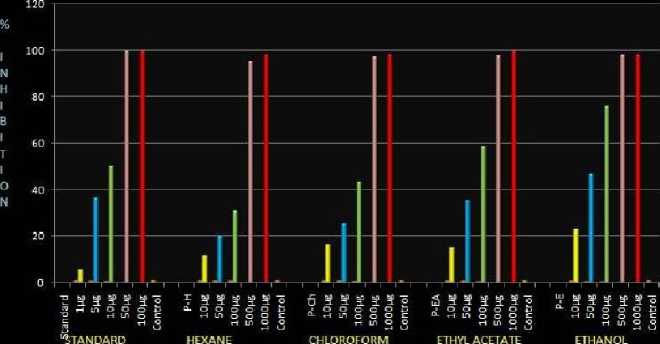
Fig 2 Antioxidant assay by ABTS radical scavenging activity using papaya leaves
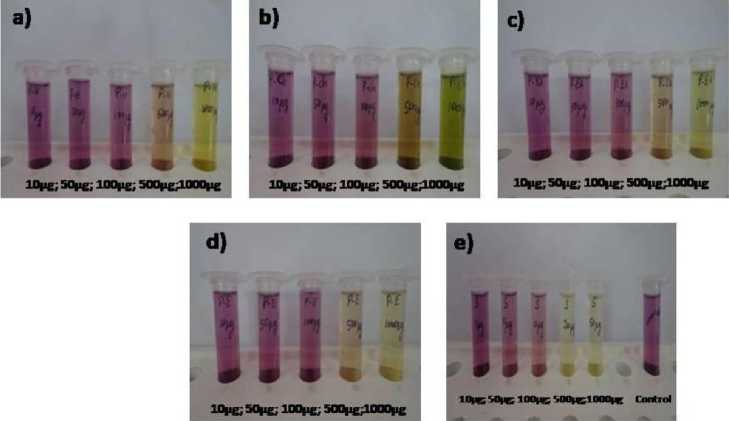
Fig 3 Antioxidant assay of papaya leaves using DPPH method
-
a) Hexane; b) Chloroform; c) Ethyl acetate; d) Ethanol; e) Ascorbic acid (Standard)
Table 3 Anti- inflammatory activity from the leaves of papaya
|
Leaf extract |
IC 50 µg |
|
Hexane |
68.61±0.74 |
|
Chloroform |
40.94±0.82 |
|
Ethyl acetate Ethanol |
64.65±0.85 172.32±0.77 |
|
Diclofenac Na |
41.07±0.81 |
Values are represented as mean ± standard deviation (n=3).
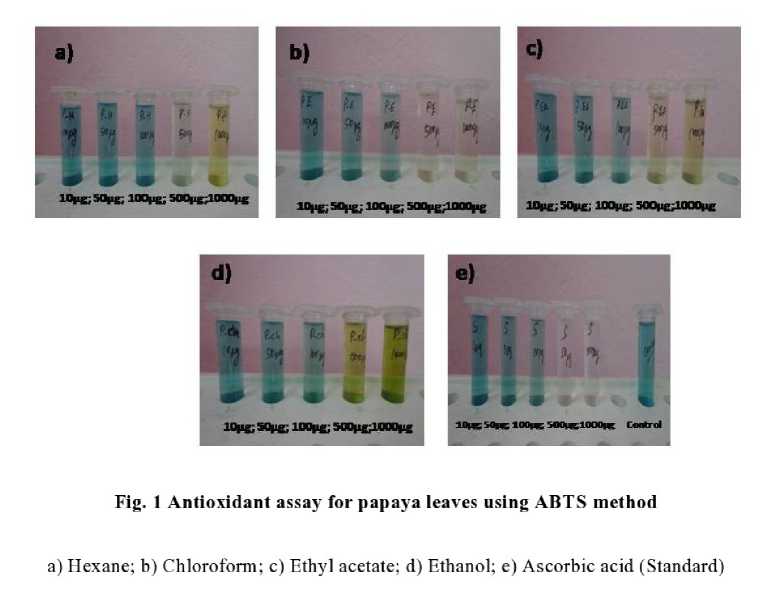
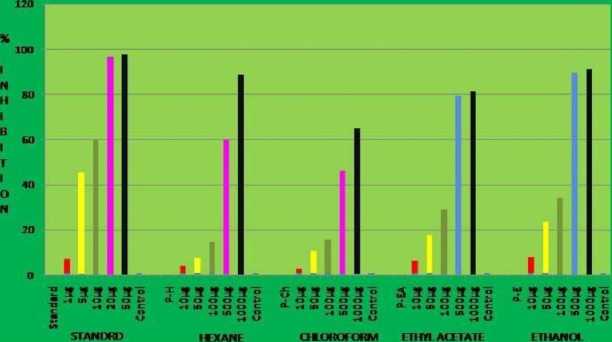
Fig 4 Antioxidant assay by DPPH radical scavenging activity using papaya leaves
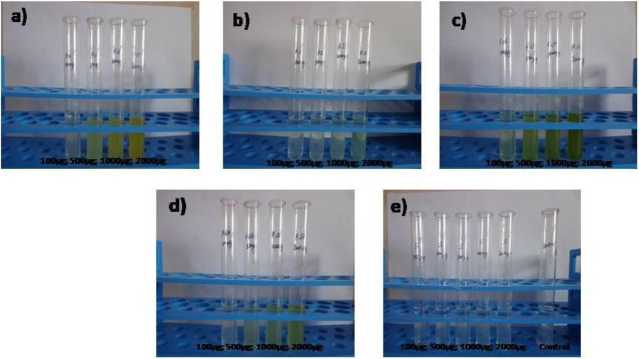
Fig 5 Anti-inflammatory assay of papaya leaves using egg albumin method
a) Hexane; b) Chloroform; c) Ethyl acetate; d) Ethanol; e) Diclofenac Na (Standard)
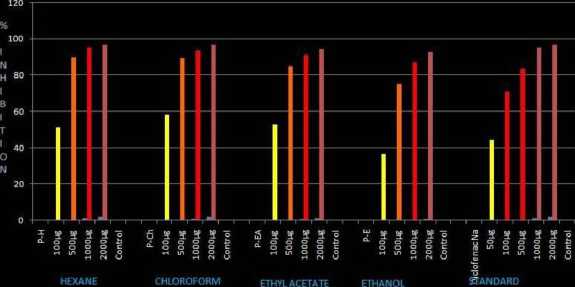
Fig 6 Anti inflammatory activity of papaya leaves using Egg albumin method
CONCLUSION
Papaya is a famous and common fruit known for its medicinal properties world wide. The present study is to investigate the potential of C. papaya in the evaluation of antioxidant and anti-inflammatory studies. Papaya extract undoubtedly offers a cheap and possibly valuable treatment for dengue. A herbal medicine being investigated to control the epic problem of dengue is the extract of the leaves of the plant. These evidences are inadequate to comment on the role of papaya leaf extract in dengue. The active compound needs to be identified and the dosage should be standardized to prove its efficacy in dengue beyond doubt. Large-scale randomised studies could establish the efficacy of this natural product in the treatment of dengue. It is also necessary to conduct pharmacokinetic studies to ensure that the active principle is absorbed from the digestive tract. The present study will provide pavement to explore the future application of Carica papaya leaves as a raw material in the pharmaceutical industries, especially in the treatment of dengue with clearly defined outcome measures.
ACKNOWLEDGEMENT
The authors are thankful to the Principal and Secretary and the Head of the Department of Botany, Madras Christian College (Autonomous) for their support and providing necessary facilities in carrying out this study.
CONFLICTS OF INTEREST
All authors have declared that they do not have any conflict of interest for publishing this research.
Список литературы Mineral composition, Antioxidant and Anti-inflammatory Activities of the Crude Extract of Leaves of Carica papaya L.
- Adetuyi, F.O., Akindwo, L.T., Omosuli, S. O. and Lola, A. (2008) Anti-nutrient and antioxidant quality of waxed and unwaxed pawpaw Carica papaya fruit stored at different temperatures. Afr. J. Biotechnol., 7, 2920-2924.
- Ahmed, J., Shivhare, U.S. and Sandhu, K.S. (2002) Thermal degradation kinetics of carotenoids and visual color of papaya puree. J. Food Sci., 67, 2692-2695.
- Akpanabiatu, M.I., Bassey, N.B., Udosen, E.O. and Eyong, E. U. (1998) Evaluation of some minerals and toxicants in some Nigerian soup meals. J Food Compost.Anal.,11, 292-297.
- Amazu, L., Azikiwe, C. C., Njoku, C., Osuala, F., Nwosu, P., Ajugwo, A. and Enye, J. (2010) Antiinflammatory activity of the methanolic extract of the seeds of Carica Papaya in experimental animals. Asian Pac J. Trop. Med., 3, 884-886. AOAC, (2003) Official methods of analysis of the association of official’sanalytical chemists, 17thedn.Association of official analytical chemists, Arlington, Virginia.
- Aravind, G., Debjitbhowmik andDuraivel, S. (2013) Traditional and medicinal uses of Carica papaya. J med. plants.Stud.,1, 7-15.
- Bamidele, V., Owoyele, Olubori, M.,Adebukola, Adeoye A., Funmilayo and Ayodeleo Soladoye. (2008) Anti-inflammatory activities of ethanolic extracts of Carica papaya leaves. Inflammo.pharmacology. 16: 168-173.
- Bari, L. Hassen, P., Absar, N., Haque, M.E., Khuda, M.I.I.E, Pervin, M.M., Khatun S. and Hossain. M.I. (2006) Nutritional analysis of two varieties of papaya (Carica papaya) at different maturation stages. PJBS., 9, 137-140.
- Beard, J. L. and Dawson Iron, H. D. (1997) In: B. L O' Dell, R.A Sunde, eds. Handbook of nutritionally essential minerals. New York: Marcel Dekker, Inc. 275.
- Bouanga-Kalou, G., Kimbonguila, A., Nzikou, J. M., Ganongo, P. F. B., Moutoula, F. E., Panyoo-Akdowa, E., Siliou, T. andDesobry, S. (2011) Extraction and characteristics of seed oil from papaya (Carica papaya) in Congo Brazzaville. Asian J. Agric. Sci.,3, 132-137.
- Comalada, M., Camuesco, D., Sierra, S., Ballester, I., Xaus, J., Galvez, J. andZarzuelo, A. (2000) In vivo quercitrin anti-inflammatory effect involves release of quercetin, which inhibits inflammation through down-regulation of the NF-κB pathway. Eur. J. Immunol.,35, 584-592.
- Deepa Murugesan and Renuka Devi Ponnuswamy. (2014) Potential anti-inflammatory medicinal plants – A review. Int. J. Pharm Pharm Sci., 6, 2-7.
- Delgado-Andrade, C., Rufián-Henares, J. A. and Morales F. J. (2005) Assessing the antioxidant activity of melanoidins from coffee brews by different antioxidant methods. J. Agric Food Chem., 53, 7832-7836.
- Der-JiunOoi, Shahid Iqbal and Maznah Ismail. (2012) Proximate composition, nutritional attributes and mineral composition of Peperomia pellucid L. (Ketumpangan Air) grown in Malaysia. Molecules. 17, 11139-11145.
- Dilip Kumar Pal, Pragya Mishra, Neetu Sachanand Ashoke K. Ghosh. (2011) Biological activities and medicinal properties of Cajanus cajan (L) Mill sp. J Adv Pharm Technol Res., 2, 207–214.
- Duke, J. A. (1996) Carica papaya L. Retrieved from https://www.hort.pordue.edu/new crop/duke_energy/Carica_papaya.html.
- Ezekiel Amri and Florence Mamboya. (2012) Papain, a plant enzyme of biological importance: A review. Am. J. Biochem. Biotechnol.,8, 99-104.
- Fairbanks, V. F. (1999) Iron in Medicine and Nutrition, In: Shils M, Olson J. A. Shike M, Ross AC, eds. Nutrition in Health and Disease. 9th ed. Baltimore: Williams and Wilkins. 223.
- Gnana Ruba Priya, Girija M. K. and Ravichandran N. (2011) In vitro study of anti-inflammatory and antioxidant activity of 4(3H)-Quinazolinone derivatives. Rasayan J. Chem.,4, 418-424.
- Hanani, E., Abdul, M. and Ryany, S. (2005) Identification of antioxidant compounds in Callyspongiaspons from the thousand islands. Pharm Sci Mag.,2, 127-33.
- Hernandez, Y., Lobo, M.G. and Gonzalez M. (2006) Determination of Vitamin C in tropical fruits: A comparative evaluation of methods. Food chem., 96, 654-666.
- Indrayan, A.K., Sudeep Sharma, Deepak Durgapal, Neeraj Kumar and Manoj Kumar. (2005) Determination of nutritive value and analysis of mineral elements for some medicinally valued plants from Uttaranchal. Curr. Sci., 89, 1252-1254.
- Kaibing Zhou, Hui Wang, Wenli Mei, Xiaona Li , Ying Luo and Haofu Dai. (2011) Antioxidant Activity of Papaya Seed Extracts. Molecules., 16, 6179-6192.
- Knochel, J. P. (2006) Phosphorus. In: Shils ME, Shike M, Ross AC, Caballero B, Cousins RJ, eds. Modern Nutrition in Health and Disease. 10th ed. Baltimore: Lippincott Williams & Wilkins. 211-222.
- Kondo, S., Kittikorn, M. and Kanlayanarat S. (2005) Preharvest antioxidant activities of tropical fruit and the effect of low temperature storage on antioxidants and jasmonates Post harvest Biol. Technol.,36 (3), 309–318.
- Kothari Vijay, Pathan, Salma and Seshadri Sriram. (2010) Antioxidant activity, free radical scavenging activity, phenol and flavonoid contents of Manikarazapota and Citrus limon seeds. J. Nat Remed., 10, 175-180.
- Krishna, K. L., Paridhavi, M. and Jagruti A. Patel. (2008) Review on nutritional, medicinal and pharmacological properties of Papaya (Carica papaya Linn.). Nat. Prod. Radiance.,7, 364-373.
- Lim, Y. Y., Lim, T. T. and Tee, J. J. (2007) Antioxidant properties of several tropical fruits: A comparative study. Food chem., 103, 1003-1008.
- Livingstone, C. and Henry, H. N. (1994) The flowering plants of Madras city and its immediate neighbourhood. Natural History section. Vol. 10. Madras Museum, Chennai.
- Lu, Y. R. And Yeap Foo, L. (2001) Antioxidant activities of polyphenols from sage (Salvia officinalis). Food Chem., 75, 197–202.
- Mahattanatawee, K., Manthey, J. A., Luzio, G., Talcott, S. T., Goodner, K. and Baldwin, E.A. (2006) J. Agric. Food Chem.,54, 7355-7363.
- Matsuura, F.C. A.U, Folegatti, M.I.D.S, Cardoso, R.L. and Ferreira, D.C 2004. Sensory acceptance of mixed nectar of papaya, passion fruit and Acerola. Sci. Agric. (Piracicaba, Braz)., 61, 604-608.
- Mahendra, C. Gunde and Nikhil, D. Amnerkar. (2016) Nutritional, medicinal and pharmacological properties of papaya (Carica papaya linn.): A review. JIPBS, 3 (1), 162-169.
- Makanjuola Olakunle Moses and Makanjuola John Olanrewaju. (2018) Proximate and selected Mineral Composition of Ripe Pawpaw (Carica papaya) Seeds and Skin. J Scien. Innov. Res., 7, 75-77.
- Mohan, S., Bustaman, A., Ibrahim, S., Al-Zubairi, A. S., Elhassan, M. M., et al. (2008) Antibacterial and antioxidant activities of Typhonium flagelliforme (Lodd) Blumetuber. Am. J Biochem Biol., 4, 402-407.
- Nisar Ahmad, Hina Fazal, Muhammad Ayaz, Bilal Haider Abbasi, Ijaz Mohammad and Lubna Fazal. (2011) Dengue fever treatment with Carica papaya leaves extracts. Asian Pac J Trop Biomed., 1, 330–333.
- Oluyemi, E. A., Akinlua, A. A., Adenuga, A. A. and Adebayo, M. B. (2006) Mineral contents of some commonly consumed Nigerian foods. Science Focus., 11, 153-157.
- Orwa, C., Mutua, A., Kindt, R., Jamnadass, R. and Anthony S. (2009) Agro forestry Database: A tree reference and selection guide version 4.0. World agro forestry Centre, Kenya.
- Otsuki, N., Dang, N. H., Kumagai, E., Kondo, A., Iwata, S and Morimoto, C. (2010) Aqueous extract of Carica papaya leaves exhibits anti-tumor activity and immunomodulatory effects. J Ethnopharmacol., 127(3):760-7.
- Porto, C. D., Calligaris, S., Celloti, E. andNicoli, M. C. (2000) Antiradical properties of commercial cognacs assessed by the DPPH test. J. Agric. Food Chem., 48, 4241–4245.
- Raaman, N. (2015) Thin Layer Chromatographic Analysis and Antioxidant Activities of Methanol Extract of Leaves of Carica papaya L. Int J. Pharm Biol. Chem., 4: 414-423.
- Sarala, N. and Paknikar, S. S. S. (2014) Papaya Extract to Treat Dengue: A Novel Therapeutic Option. Ann Med Health Sci Res.,4, 320–324.
- Saurabh Pandey, Peter, J., Cabot, P., Nicholas Shaw and Amitha K. Hewavitharana. (2016) Antiinflammatory and immunomodulatory properties of Carica papaya. J. Immunotoxicol., 13(4): 590-602.
- Sharma, D. K., Tiwari, B., Singh, R. K., Sahu, S., Mathur, S. C., Singh R.M, et al. (2013) Estimation of minerals in Carica papaya L. Leaf found in Northern India by using ICP-OES technique. Int J Sci Eng Res., 4, 2012–2019.
- Soares, J. R., Dinis, T. C. P., Cunha, A. P. and Almeida, L. M. (1997) Antioxidant activities of some extracts of Thymus zygi. Free Radic. Res., 26, 469–478.
- Straub, D.A. (2007) Calcium supplementation in clinical practice: A review of forms, Doses and indications. Nutr.Clin.Pract.,22, 286–296.
- TatyasahebPatil, Snehal Patil, Anuprita Patil and Shreedevi Patil. (2014) Carica Papaya Leaf Extracts – An Ethnomedicinal Boon. Int. J. Pharmacogn. Phytochem. Res.,6, 260-265.
- Umana, U. E., Timbuak, J. A., Danladi, J., Samuel, A., Joseph, H. andAnuka J. A. (2014) Antiinflammatory, anti-pyretic and antinociceptive activities of orally-administered aqueous extract of Carica papaya seeds in animal models.Ann Exp Biol., 2,21–27.
- Vij, T. andPrashar, Y. (2015) A review on medicinal properties of Carica papaya Linn. Asian Pac. J. Trop. Dis., 5, 1-6.
- Wall, M.M. (2006) Ascorbic acid, Vitamin A and mineral composition of Banana (Musa sp.) and papaya (Carica papaya) cultivars frown in Hawaii. J. Food Compos. Anal., 19, 434-445.
- Yunahara Farida andIswahyuniIswahyuni. (2018) Isolation, Identification and antioxidant activity of chemical compound in ethanol extract of Papaya leaves (Carica papaya L.). Asian J. Pharm. Clin. Res., 11(1), 118-121.

